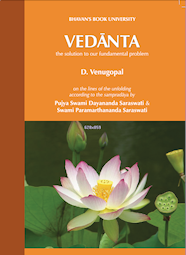
Understanding Reality
in the Vision of Advaita Vedānta
by Wolfgang P., wpl@gmx.net
Read Part 1 of this article
The reality of money
Let’s use this method of inquiry to investigate another ubiquitous entity: What is the reality of money? Ask someone on the street if money is real, you would hardly find anyone doubting it. But what actually ‘is’ money? We assume it is real, but what is the substratum of its reality? Is it independently real or does it depend on something for its existence? Is money just the amount of coins in your wallet? Certainly not, since money also appears as bills, cheques, and as digital data. Today the majority of the world’s money is stored as binary code on hard drives. Is the reality of money the binary code on the hard drive, which is storing the balance of the bank account?
Let’s imagine, an alien species visits our planet for the first time. In their foreign culture the concept of money is unknown. Would it be obvious for them to learn what money is, by simply investigating the data of the hard drive? All they could do is extract the data, but they would lack the contextual information about what to do with it. Therefore, money, which seems very ‘real’ to us practically, has no physical substratum. It is only by convention that coins, bills, or digital data act as a symbolic carrier for money. The reality of 10 USD does not originate from a 10-dollar bill. If the money were ‘in’ the bill, it would be impossible to replace an old bill for a new one. Physical carriers, like coins or bills, act as a medium for money, but they ‘are’ not money. Continue reading



